Introduction to Curry Rice
Did you know that curry is just as popular in Japan as ramen? Furthermore, when most people think of curry, they think of India or Thailand. While these nations have fantastic curry-based cuisines, Japanese Curry has its roots in these countries, but not in the way one might imagine. The typical individual in Japan ate curry more frequently than sushi or tempura in 2000. Most individuals said they ate curry and rice multiple times each month in a study of over 10,000 Japanese citizens, which labeled curry “a national food of Japan.” And this article, I will introduce you and guide you about Japanese curry rice.
Etymology
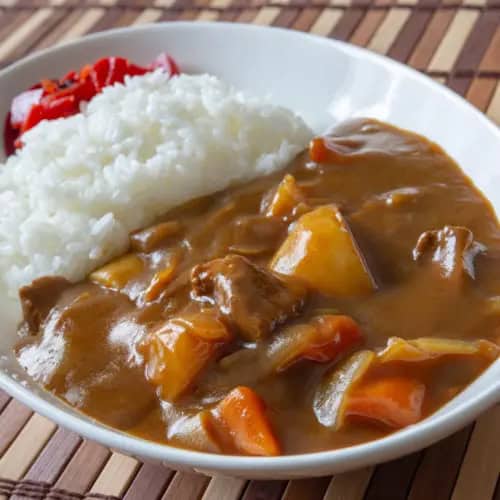
Curry quickly became a staple of the Japanese diet. In Japan, karē is typically served as a rice dish, karē raisu (curry rice). In Mainland japan, the earliest reference of a meal named raisu karē (meaning ‘rice curry’) – but spelled taisu karē – is in Japanese cookbooks from 1872.
What is Curry Rice?
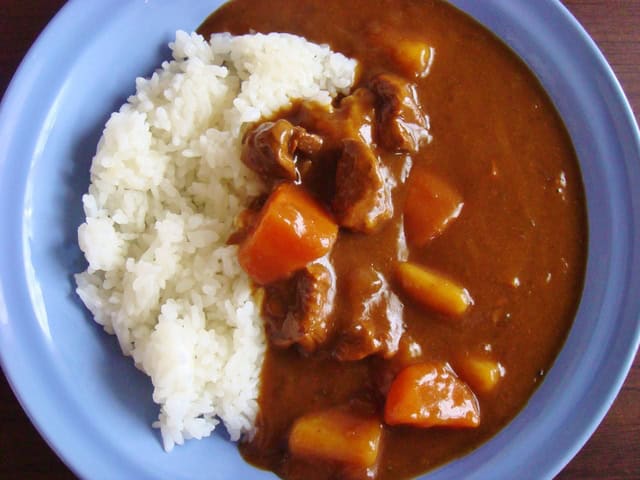
Curry rice (カレーライス) is a Japanese traditional meal that consists of curry served over rice. There is also a variety of original-style curry rice that is only found in Japan. This was introduced to Japan from England during the Meiji era, and it is a meal that has altered distinctively in Japan. It was born in England and based on Indian cuisine. It also is popular as “curried rice” or “curry and rice” in England. In Japan, they sometimes shortened this as “curry”, and it is so popular that they referred it to be the “Japanese national food” with ramen. It consistently ranks high in popularity surveys of elementary and junior high school lunch menus.
History of Curry Rice
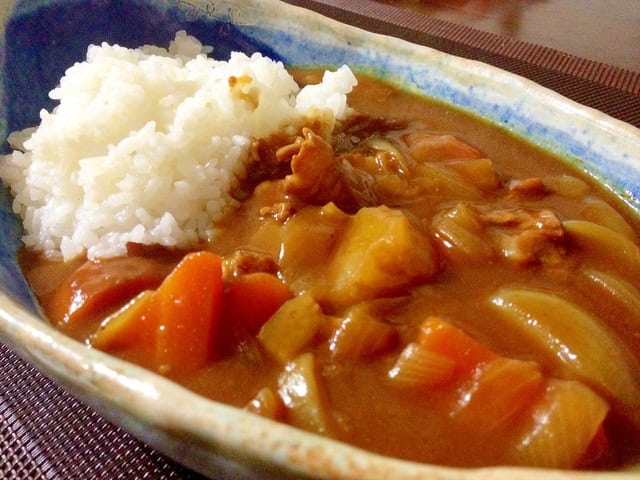
The Origins of Japanese Curry
Curry rice, like ramen, is now considered a national cuisine of Japan. The British introduced curry to Japan during the Meiji era (1868-1912) through the British Navy, which had adapted the dish from Indian cuisine during British colonial rule of India. Japan then further adapted this British-style curry to suit Japanese tastes, creating the origins of modern Japanese curry.
Early Encounters and Introduction
The first documented encounter between a Japanese person and curry occurred in 1863, when a member of a shogunate delegation traveling to Europe on a French liner observed an Indian passenger eating curry and rice. However, the Japanese did not widely enjoy curry until the early Meiji period.
In 1872, Japan published two cookbooks that included curry recipes: “Seiyō Ryōri-tsū” (The Expert on Western Cookery) by Kanagaki Robun and “Seiyō Ryōri Shinan” (Guide to Western Cooking) by Keigakudo Shujin. Kanagaki Robun based his book on translations of notebooks that an English resident of the foreign settlement in Yokohama had written to show his Japanese servants how to cook Western meals. The Imperial Japanese Army Military Academy featured curry rice on its menu as early as 1873.
Western Influence and the Opening of Japan
Japan’s isolation system practically disintegrated after Perry’s expedition arrived in Uraga in 1853. Many Westerners subsequently resided in the Yokohama area, and “Western cuisine” spread among the Japanese as a result.
Naval Adoption and Health Benefits
The Imperial Japanese Navy adopted curry from the British Navy in the 1870s-1880s as part of dietary reforms led by physician Takaki Kanehiro to combat beriberi, a vitamin B1 deficiency that afflicted sailors. The combination of meat, vegetables, and flour in curry provided essential nutrients that helped prevent this disease. Even today, the Japan Maritime Self-Defense Force serves curry every Friday, continuing this naval tradition.
Curry as Luxury Cuisine
During the Meiji era, people in the private sector still perceived curry as luxury cuisine for the wealthy, available only in high-end yōshoku (Western-style) specialty restaurants. American professor William S. Clark, employed at Sapporo Agricultural College (now Hokkaido University) in 1877, popularized the dish and suggested adding potatoes to curry.
Commercialization and Popularization
In 1923, Minejiro Yamazaki created Japan’s first domestically produced curry powder, and he later founded S&B Foods. During the Taishō period (1912-1926) and into the Shōwa period (1926-1989), Japan produced good, affordable domestic curry powder. Military groups and schools especially favored curry because cooks could easily make one large batch and serve it to hundreds of people.
Around 1950, manufacturers invented curry roux blocks, inspired by chocolate bars. These convenient blocks contained all necessary spices and allowed anyone to make curry simply by adding water and ingredients.
The Retort Pouch Revolution
In February 1968, Otsuka Foods became the first company in the world to commercialize retort pouch food when it launched “Bon Curry.” A product developer at Otsuka Foods drew inspiration from a 1964 article in an American professional packaging journal about vacuum-sealed sausages that the US Army used as field rations. The company utilized sterilization technology from its pharmaceutical background, applying the same high-temperature sterilization techniques they used for intravenous drips. Initially, the company sold the product only in the Hanshin region, but with improvements to packaging that extended shelf life to two years, Otsuka Foods released it nationwide in 1969. By 1973, five years after its launch, Otsuka Foods reached 100 million packs in annual sales. Curry became a food that people could store for long periods and prepare in just three minutes with boiling water, similar to instant noodles.
Curry as a National Dish
After positive responses in the Japanese Army and Navy, curry eventually became popular in school cafeterias. By the 1970s, surveys ranked curry rice among the top three favorite home-cooked dishes in Japan. Today, people in Japan eat curry approximately once and a half times per week, and many consider it one of the nation’s favorite comfort foods alongside ramen.
Curry Rice Recipe
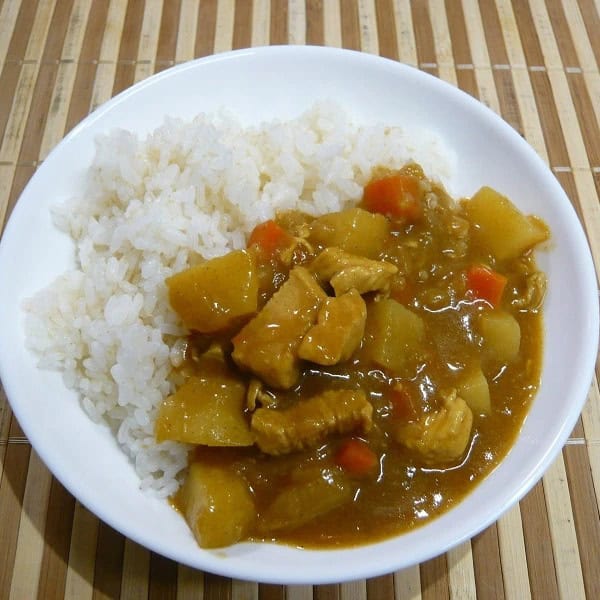
Curry Rice Ingredients
| The Curry Rice Ingredients for 6 person | |
| Vermont curry <sweet> | 115g |
| Beef (diced) | 250g |
| Onions (medium) | 400g |
| Potatoes (medium) | 230g |
| Carrot (medium) | 100g |
| Salad oil | 14g |
| Water | 850g |
How to make Curry Rice?
Cut the onion in half vertically, remove the core, etc. with the flat side down, and cut into radial combs.
Cut the potatoes in half vertically, then cut in half and divide into two equal parts. As a guide, divide one piece into 6 to 8 equal parts.
Cut the carrots in half vertically and cut them into small pieces about 3 cm in size with the flat side facing down.
Heat the salad oil in a thick pan, add beef, onions, potatoes, and carrots, and fry until the meat becomes brown and the onions are tender.
Add water and remove the lye when it boils. Boil on low to medium heat for about 15 minutes until the ingredients are soft.
Turn off the heat, and after the boiling has subsided, add the roux and dissolve it well.
Boil for about 10 minutes until it thickens, stirring occasionally over low heat again.
What are the vegetables that go well with Curry?
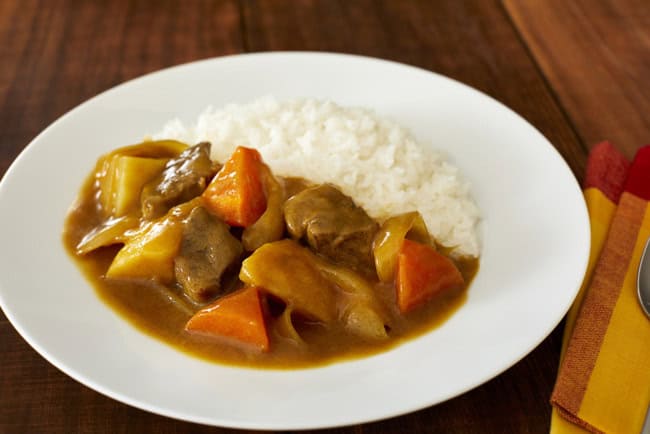
Curry is one of the most popular dishes throughout the year. As ingredients, potatoes, onions, carrots, and other classics are good, but why not use seasonal vegetables to change the curry? You can eat vegetables and meat on one plate, and if you cook them all together, it will come in handy as a pre-made menu. Speaking of “radish” and “Chinese cabbage”, which are seasonal vegetables from autumn to winter. When you get whole radish and Chinese cabbage, it is easy to cook them all at once. Not only do radish and Chinese cabbage have a light taste and go well with deep seasoning, but they also become soft when simmered.
How to eat the curry?
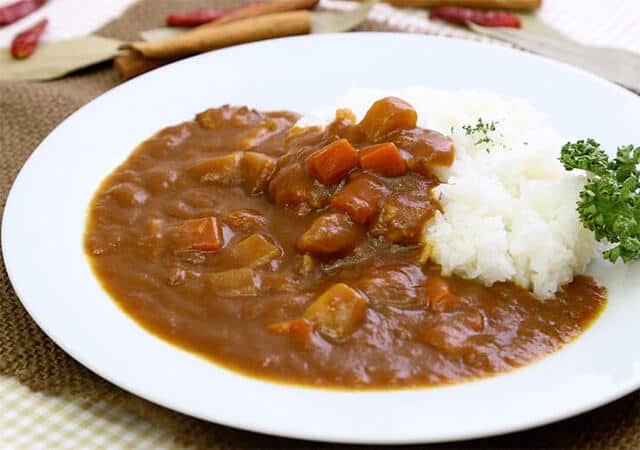
In Japan, they serve curry in either a dish or a metal container called Sauce Boat or Gravy Boat. About the latter case, they pour the curry from a sauceboat container into the rice. In Japan, the names of the containers can be as ” sauce pot” and “gravy pot.” When eating curry and rice, there are ways to mix rice and curry on a spoon, and to mix curry and rice in advance. In South Asia, such as India and Sri Lanka, it is customary to mix and eat with hands, and in the era of “yellow curry” made with curry powder. Additionally, Worcester sauce was the standard. In addition to raw eggs and sauces, some people eat them with seasonings such as soy sauce and mayonnaise, and there are many ways to eat them.
Retort-Pouch Curry
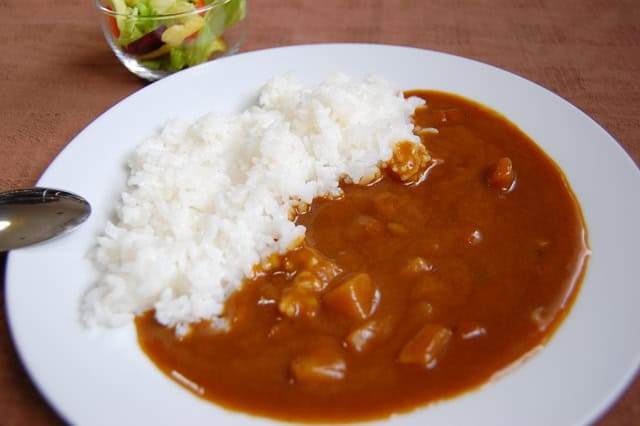
You can also eat curry rice by buying some commercially manufactured products. The Retort curry is a convenient product that you can make and eat one serving of curry rice by simply boiling it in hot water for 3 to 7 minutes or heating it in the microwave for a few minutes. Therefore, in Japan, it is now used on a daily basis by a wide range of people, from children to the elderly. There are various types of retort foods, but retort curry is a popular product that accounts for one-third of the sales volume.
What are the health benefits of eating Curry?
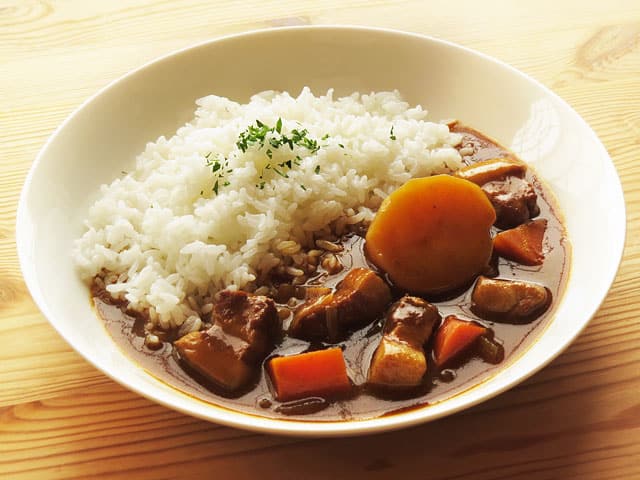
Do you know curry is one of the ultimate healthy foods with plenty of “Chinese medicine”? Curry, which contains a large number of spices that some treat as medicine, can be expected to have various health effects such as preventing a decrease in appetite and liver function and enhancing the function of autonomic nerves. Curry is one of the best meals to prevent summer fatigue.
What are the types of Curry and their ranking?

1. Keema Curry
Keema is the man’s favorite curry and is delicious and has the taste of meat. You can place a thick keema curry on top of the flat rice and put the soft-boiled egg into the middle part.
2. Chicken curry
In Japan, most curry is pork curry, but in the world, chicken is the standard curry meat. Additionally, in India, the home country of curry, which has a lot of Islam and Hinduism, chicken curry is overwhelming because they do not eat pork or beef for religious reasons.
3. Murugu Makani
In the summer of 2020, butter chicken curry was the best-selling seasonal curry at Matsuya. Butter chicken curry is also popular in convenience store lunch boxes.
4. Beef curry
You can feel the umami of the meat firmly, and it is a nice curry when you want to eat it solidly. Japanese cut the beef into slightly larger pieces and simmered until it becomes slightly soft. It goes well with vegetables such as peppers, eggplants, and onions.
5. Pork curry
Probably the most eaten curry in Japan is pork curry. The fat of the pork meat melts into the curry roux, and the fat and the curry are very delicious.
Recommended Curry Rice Restaurants
Yellow Spice
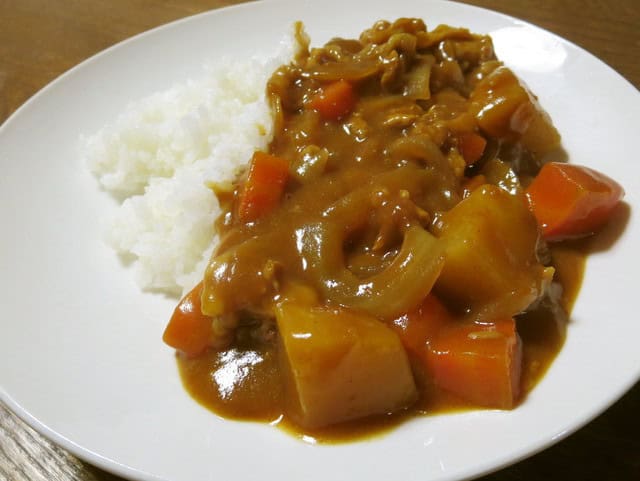
The inside of the store is a dim space with bar-like lighting. It seems that many people use dates. The curry is soup, so it’s smooth and you can drink it as it is. The ingredients are also lumpy on the bottom and it is a perfect score to eat. Their soup curry ramen is offered only on Friday nights and weekends, is also very popular among regular customers. Spicy soup curry and smooth flat noodles are a good match.
Kyoeidou
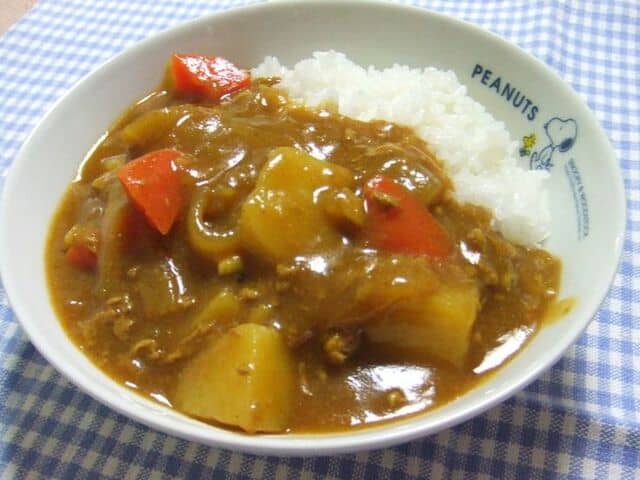
“Kyoeidou” is the only restaurant in Japan that offers Sumatra curry. Its history is old and dates back to the 13th year of the Taisho era. The dark black sauce unique to Sumatra Curry does not use any flour and condensed with 26 kinds of spices and the deliciousness of vegetables. The meat that is also simmered until they become tender and juicy. The curry made by boiling for hours has a smooth texture but a rich taste. Pork, chicken, beef, shrimp, and tongue curry do not use the same sauce, so they all have different tastes.
Spice Cafe
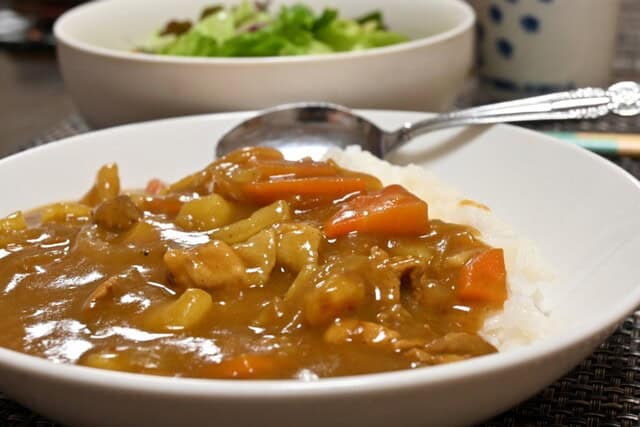
You can enjoy spice dishes prepared by Mr. Ichijo Ito, the owner of a chef who has traveled all over the world. You can enjoy Japanese-style modern curry in the store, which is an old-fashioned folk house. “Spice Cafe” with the concept of “spice dishes for Japanese people with delicate tongues”. The shop uses spices not only for curry but also for salads and fish dishes.
Tomato
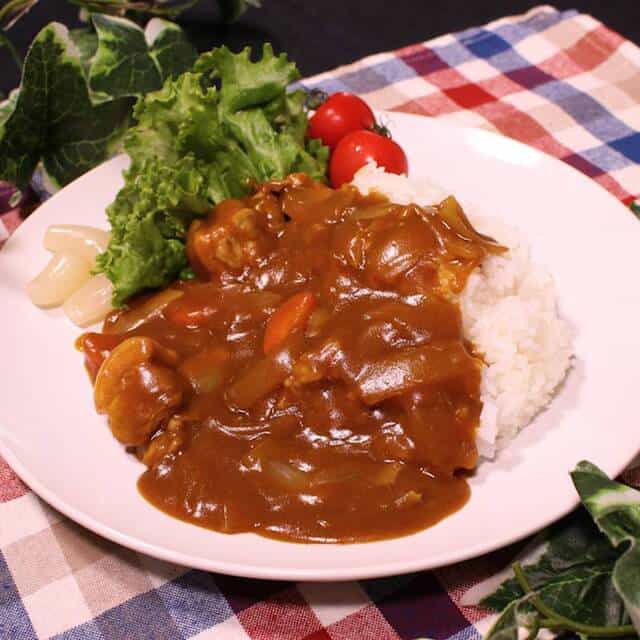
In Ogikubo, a fierce battleground for curry, “Tomato” is a famous restaurant that no one knows its name. The red awning near the residential area after passing through the shopping district is a landmark. The atmosphere of the restaurant is like a small old-fashioned Western-style restaurant. It’s not flashy, but it’s an elegant and warm shop. Their menu includes curry, beef stew, and beef stroganoff. At this shop, we blend 36 kinds of spices and carefully finish the curry over a week. The curry that took such time and effort has a deep color.
Conclusion
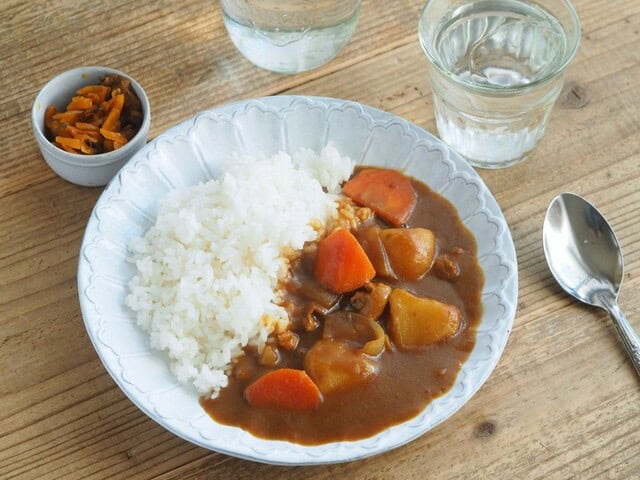
There is no real conclusion to the story of Japanese Curry. It writes anew every day. There is a real heartwarming effect that it has can easily be considered Japanese soul food. It’s the kind of dish that makes one think back to your favorite memories of a homecooked meal. Yet, it can be eaten and found everywhere in Japan. If you have never tried Japanese Curry, you can try it now and make one of your own. Additionally, if you like curry, you can have a taste of Curry bread of Tokyo and Yokosuka Kaigun Curry from Kanagawa prefecture.
FAQ
What is Japanese Curry Rice?
Japanese Curry Rice is a popular dish made with thick curry sauce served over rice. It is milder and sweeter than Indian or Thai curry.
How spicy is Japanese curry?
Most Japanese curry is mild, but restaurants usually offer mild, medium, and hot levels to choose from.
What ingredients are commonly used in Japanese curry?
Typical ingredients include potatoes, carrots, onions, and meat such as pork, beef, or chicken.
What makes Japanese curry different from other curries?
It is thicker, less spicy, and slightly sweet. The sauce is usually made with curry roux blocks.
Is Japanese curry vegetarian-friendly?
Some restaurants offer vegetarian curry, but many curries use meat-based broth, so it’s best to ask before ordering.
Where can tourists try good Japanese curry?
You can enjoy curry at specialty curry shops, family restaurants, cafés, and even convenience stores throughout Japan.
What is Katsu Curry?
Katsu Curry is curry rice topped with a breaded and fried pork cutlet (tonkatsu). It is one of the most popular curry variations in Japan.
Are there regional styles of Japanese curry?
Yes. For example, Hokkaido Soup Curry and Kanazawa Black Curry are well-known regional variations.
Can Japanese curry be eaten with something other than rice?
Yes. It is also served with udon (curry udon) or baked with rice and cheese (doria style).
Is Japanese curry available in convenience stores?
Yes. Convenience stores sell ready-to-eat curry dishes and microwaveable packs, making it easy for tourists to try.
What toppings are popular with Japanese curry?
Common toppings include fried chicken, sausage, cheese, croquettes, and soft-boiled eggs.
Is Japanese curry kid-friendly?
Yes. Because it is mild and slightly sweet, many children in Japan enjoy curry rice.
Can I buy curry roux as a souvenir?
Absolutely. Curry roux blocks are sold in supermarkets and convenience stores and are a popular souvenir item.
When did curry become popular in Japan?
Curry became widespread during the Meiji era and later became a common home-cooked meal across Japan.
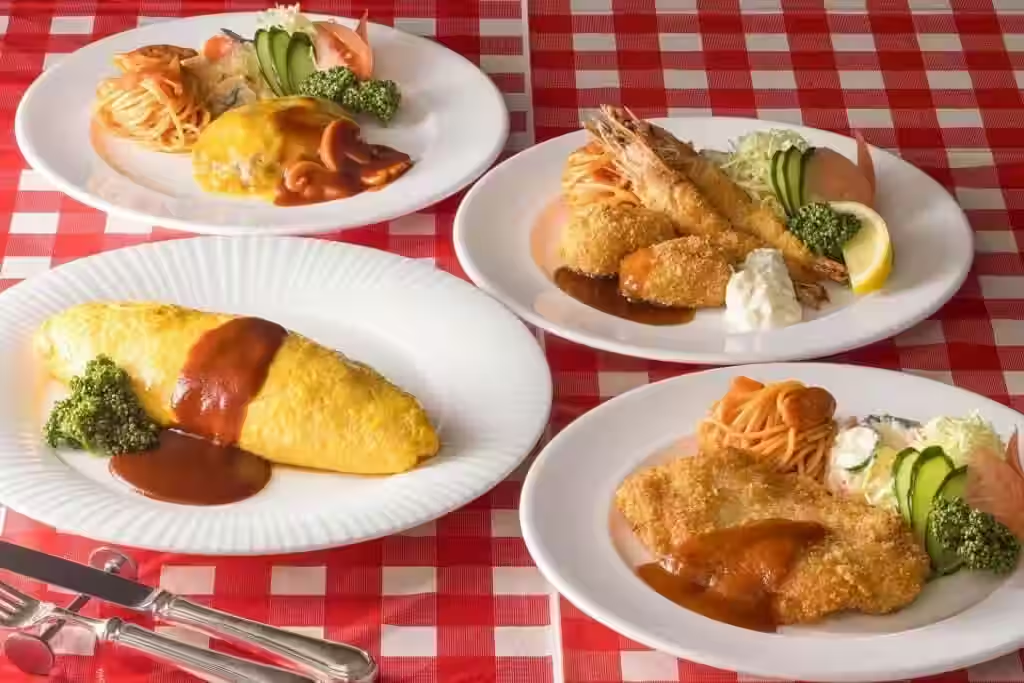
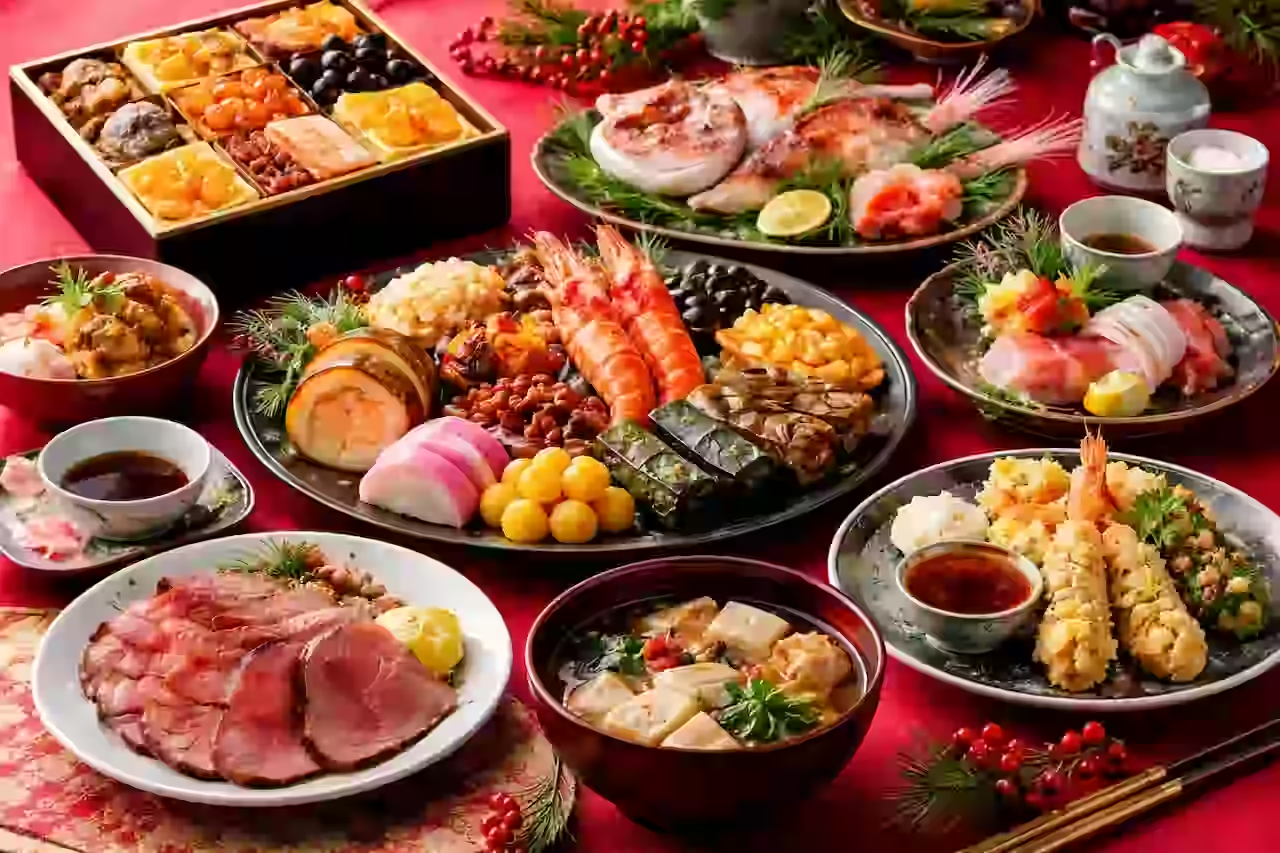
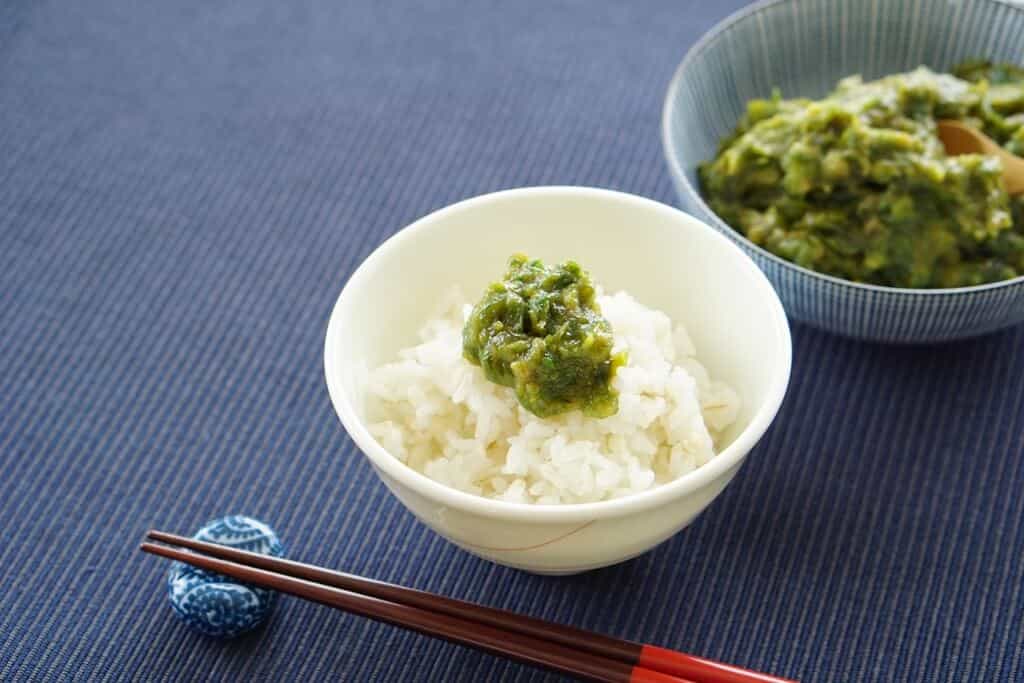
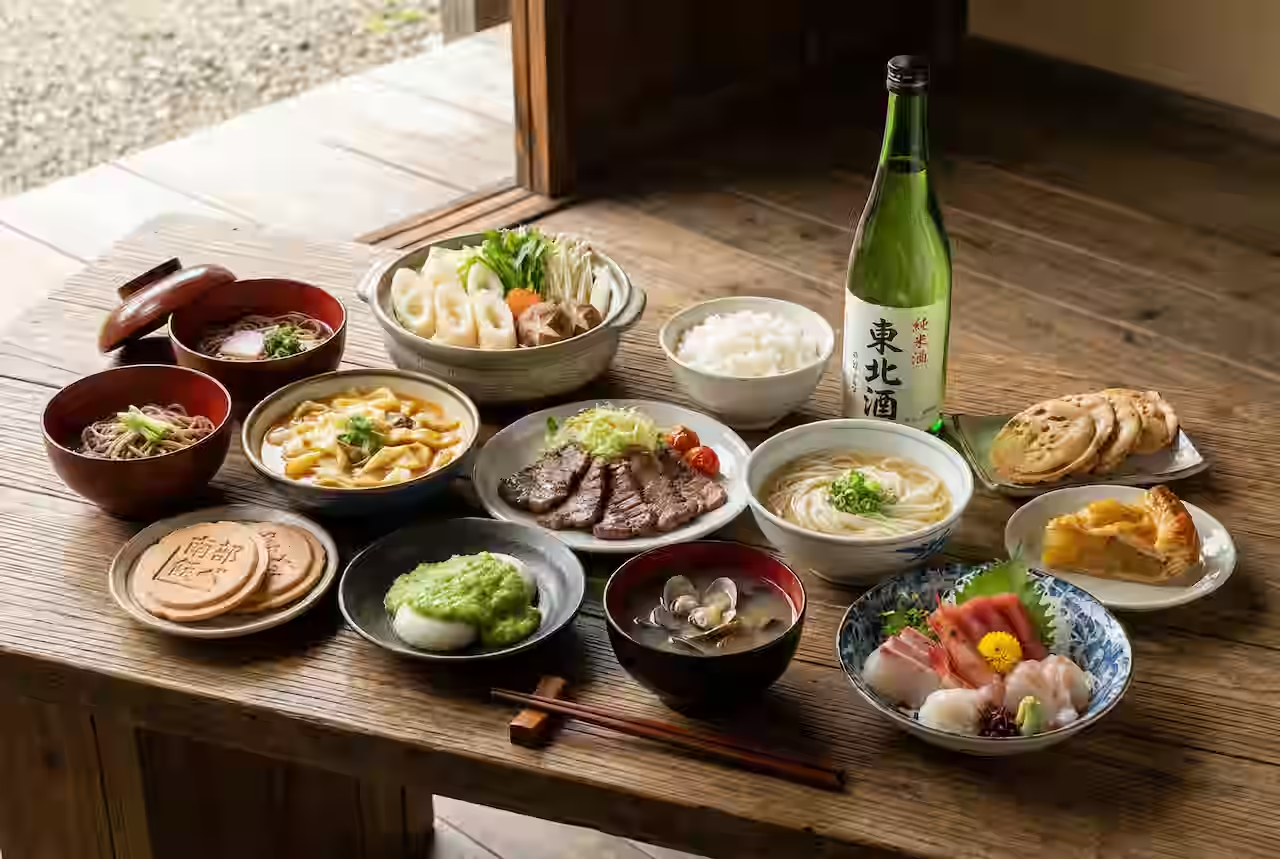


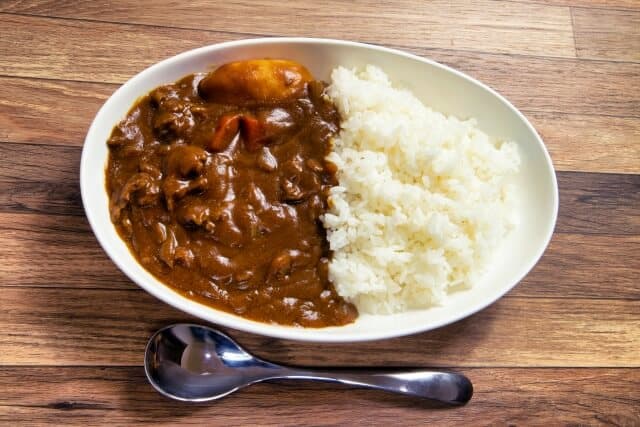
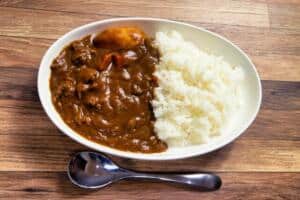
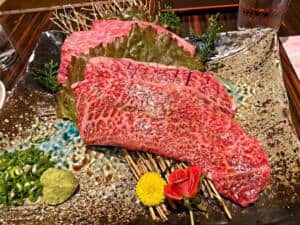
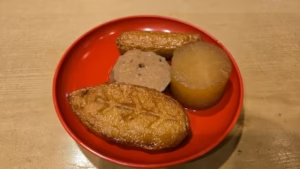
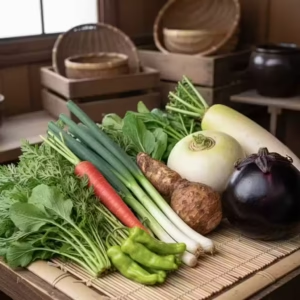

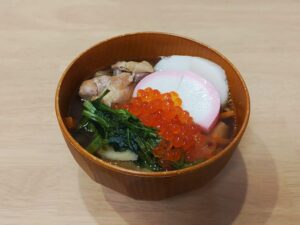
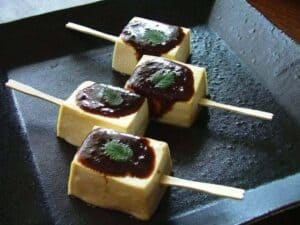
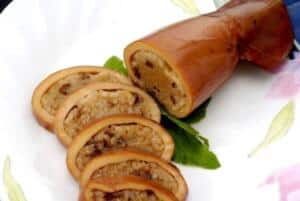
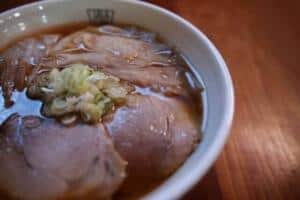
Comments